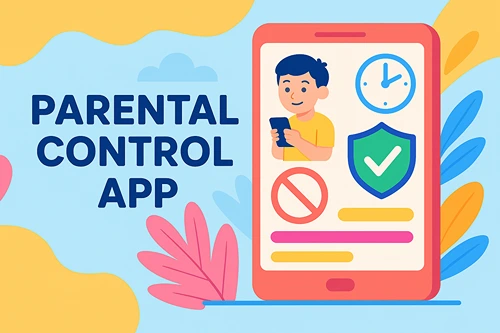Happy Home Decor: Easy Easter Window Decorations for Kids
Easter is a time for family, fun, and, of course, decorating! As a parent, I’m always looking for simple ways to get my kids involved in making our home feel festive. This year, we’re focusing on the windows. They love picking out bright decorations that make the whole room feel cheerful and ready for spring.
Windows are a fantastic canvas for easy, eye-catching Easter decor that even the littlest hands can help create. Big or small, everyone can get involved.
Get ready to brighten up your home decor and spread some Easter cheer with these fun and easy ideas!
Why Decorate Windows for Easter?
Simple and impactful
Decorating your windows for Easter is an easy way to add a festive touch to your home without a lot of fuss.
Windows are a blank canvas that can be easily transformed with simple materials and a little creativity.
Kid-friendly fun
Window decorations are a great way to involve kids in the Easter decorating process. They can help with everything from choosing colors and designs to applying the decorations to the windows.
Spreading Easter cheer
Easter window decorations are a great way to spread Easter cheer to your neighbors and community. Passersby will enjoy seeing your festive windows, and it can help to create a sense of community spirit.
Easy Easter Window Decoration Ideas
Chalk marker masterpieces
Chalk markers are a fantastic way to create Easter-themed designs directly on your windows. They’re easy to use, even for kids, and wipe off with a damp cloth, so you don’t have to worry about making mistakes.
How to create chalk marker window art
- Gather your supplies: You’ll need chalk markers in various colors, stencils (optional), and a damp cloth for cleanup.
- Plan your design: Decide what you want to draw on your windows. Easter eggs, bunnies, chicks, and flowers are all great options.
- Get creative: Use the chalk markers to draw your design directly on the windows. If you’re using stencils, simply trace the outline with the chalk marker.
- Clean up any mistakes: If you make a mistake, simply wipe it off with a damp cloth and start again.
Tips for success
- Use stencils for precise designs.
- Let your kids get creative and draw their own Easter-themed pictures.
- Use a variety of colors to make your window art pop.
Contact paper creations
Contact paper is another versatile material that can be used to create easy Easter window decorations. It’s inexpensive, easy to find, and can be used to create a variety of different designs.
How to make contact paper window clings
- Gather your supplies: You’ll need contact paper, tissue paper in various colors, scissors, and a pen or marker.
- Draw your design: Draw an Easter-themed design on the contact paper. Easter eggs, bunnies, chicks, and flowers are all great options.
- Cut out the design: Cut out the design from the contact paper.
- Apply tissue paper: Cut the tissue paper into small squares and apply them to the sticky side of the contact paper design.
- Hang your creation: Hang your contact paper creation on your window.
Tips for success
- Use a variety of colors and textures of tissue paper to create a unique look.
- Let your kids help tear and apply the tissue paper.
- Experiment with different shapes and sizes of contact paper designs.
Easter egg suncatchers
Suncatchers are a classic window decoration that can be easily adapted for Easter. They’re a great way to add color and light to your home, and they’re also a fun project to do with kids.
How to make Easter egg suncatchers
- Gather your supplies: You’ll need clear plastic lids (like those from yogurt containers), colorful cellophane, scissors, glue, and a hole punch.
- Cut out egg shapes: Cut out egg shapes from the plastic lids.
- Apply cellophane: Cut the cellophane into small pieces and glue them to the inside of the egg shapes.
- Punch a hole: Punch a hole at the top of each egg.
- Hang your suncatchers: Hang your suncatchers in your windows using string or ribbon.
Tips for success
- Use a variety of colors of cellophane to create a rainbow effect.
- Let your kids help cut and glue the cellophane.
- Add glitter or other embellishments to your suncatchers for extra sparkle.
Easter Wreaths
Wreaths aren’t just for doors, they can also be used to decorate windows. An Easter wreath is simple, fast, and festive.
How to make an Easter wreath
- Gather your supplies: You’ll need a burlap, grapevine wreath, and extra plastic Easter eggs.
- Attach the Easter eggs: Attach the plastic Easter eggs to the wreath using glue or wire.
- Hang your wreath: Hang your wreath in your windows using string or ribbon.
Tips for success
- Use a variety of colors and sizes of Easter eggs to create a visually appealing wreath.
- Add other Easter-themed embellishments to your wreath, such as chicks, bunnies, or flowers.
- Consider using a lighted wreath for extra sparkle.
Stickers
Window stickers are a super simple way to add festive flair with zero artistic skill required.
How to decorate your windows with stickers
- Gather your supplies: You’ll need window stickers.
- Apply the stickers: Apply the stickers to the window.
- Admire your work: Enjoy your festive window stickers.
Tips for success
- Consider Easter window decorations from Stickers4 to apply to your windows.
- Let your kids help apply the stickers.
Making it a Family Affair
Get everyone involved
The best part about these Easter window decoration ideas is that they’re all kid-friendly. Get everyone in the family involved in the decorating process, from choosing designs and colors to applying the decorations to the windows.
Make it a tradition
Make decorating your windows for Easter a family tradition. Each year, you can try new ideas and designs, and create lasting memories together.
Conclusion
Decorating your windows for Easter is a fun and easy way to celebrate in your home by adding a festive touch to your home.
With these simple ideas, you can create eye-catching Easter window decorations that even the littlest hands can help create.
So, gather your supplies, get your family involved, and get ready to spread some Easter cheer!










